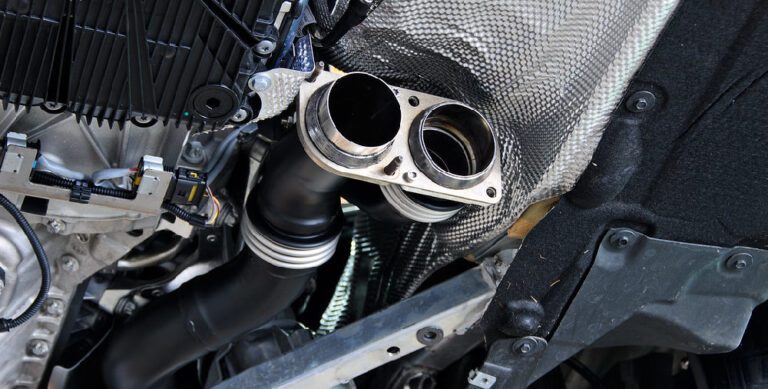Do Catalytic Converters Get Hot? Unveiling the Secrets of Heat Generation
Catalytic converters do get hot as they are designed to reach high temperatures to efficiently convert harmful emissions into less harmful substances.
The Basics Of Catalytic Converters And Heat Generation
Catalytic converters play a crucial role in reducing harmful emissions from vehicles, making them an integral part of modern automotive technology. One significant aspect to consider when discussing catalytic converters is heat generation. The importance of catalytic converters lies in their ability to convert harmful exhaust gases into less harmful compounds through chemical reactions.
Catalytic converters rely on internal catalysts, typically made of precious metals like platinum, palladium, and rhodium, to facilitate these reactions. When hot exhaust gases pass through the converter, the catalysts promote chemical reactions, converting harmful gases like carbon monoxide, nitrogen oxides, and hydrocarbons into less toxic substances like carbon dioxide, nitrogen, and water vapor.
Several factors influence the heat generation in catalytic converters. For instance, the quantity of incoming exhaust gases, engine operating temperature, and catalyst efficiency all play a role. Additionally, fuel quality and engine cleanliness can affect the converter’s performance and heat generation. It is crucial to ensure proper maintenance and use high-quality fuel to maximize catalytic converter effectiveness and longevity.
Understanding The Role Of Temperature In Catalytic Converters
The temperature plays a crucial role in the performance of catalytic converters. These devices are designed to catalyze and convert harmful emissions into less harmful substances. The efficiency of a catalytic converter depends on maintaining an optimal temperature range where the chemical reactions can occur most effectively.
When the catalytic converter operates within this range, it can effectively reduce the emissions of pollutants such as carbon monoxide, nitrogen oxides, and hydrocarbons. Low temperatures can hinder the efficiency of the converter, as chemical reactions require a certain level of heat. On the other hand, excessive heat can damage the converter’s internal components, reducing its effectiveness in treating emissions.
The optimal temperature range for a catalytic converter typically falls between 400 and 600 degrees Celsius. At this temperature, the converter can efficiently convert harmful gases into less harmful substances such as carbon dioxide, water vapor, and nitrogen. Operating below or above this range can result in decreased performance and increased emissions.
Maintaining the correct operating temperature for catalytic converters is essential for meeting emission standards and ensuring their proper functioning. Proper maintenance and regular inspections of the catalytic converter can help identify any issues with temperature and optimize its performance.
Causes Of Heat Generation In Catalytic Converters
Chemical reactions occurring within catalytic converters are responsible for the generation of heat. As harmful gases flow through the converter, they react with the catalyst, causing a chemical transformation. This conversion process leads to the production of less harmful substances, such as carbon dioxide, water vapor, and nitrogen gas.
During these chemical reactions, heat is released as a byproduct. The high temperatures within the catalytic converter are necessary for these reactions to occur efficiently. The role of catalysts in this process cannot be overlooked, as they facilitate the reactions by lowering the activation energy required.
The heat generated by catalytic converters is crucial in ensuring the proper functioning of the emissions control system. It is utilized to maintain the ideal operating temperature of the converter, allowing it to operate at peak efficiency.
Monitoring And Managing Catalytic Converter Temperature
Monitored and managed catalytic converter temperature is crucial for the proper functioning and longevity of the device. Temperature sensors play a vital role in ensuring the efficient performance of catalytic converters.
Heat management strategies are essential to maintain the optimal operating temperature range. By monitoring and controlling the temperature, catalytic converters can effectively convert harmful emissions into less harmful compounds.
| Temperature Range | Effect |
|---|---|
| Too Low | Reduced catalytic efficiency |
| Optimal Range | Efficient conversion of pollutants |
| Too High | Potential damage to the catalytic converter |
Extreme temperatures can negatively impact catalytic converters. Excessive heat can lead to catalyst degradation, melting, or thermal cracking. On the other hand, too low temperatures can impede catalytic converter performance and result in increased emissions.
Regular maintenance and inspections are necessary to ensure that catalytic converters are operating within the optimal temperature range. Prompt repair or replacement should be undertaken if any temperature-related issues are identified. By managing and monitoring catalytic converter temperature, the overall efficiency and lifespan of the device can be maximized.
Impact Of Heat On Catalytic Converter Efficiency And Lifespan
Do Catalytic Converters Get Hot
Impact of Heat on Catalytic Converter Efficiency and Lifespan
Effects of heat on catalytic converter performance
Heat plays a crucial role in the performance and lifespan of catalytic converters. As the name suggests, these devices operate by catalyzing chemical reactions. This process occurs at a high temperature, typically between 400 and 800 degrees Celsius.
However, excessive heat can negatively impact the efficiency and longevity of catalytic converters. Intense heat can cause the converter’s core to melt or deform, compromising its ability to facilitate the necessary chemical reactions. Additionally, extreme temperatures can lead to thermal shock, causing cracks and further deterioration.
To prolong the lifespan of catalytic converters, it is essential to address excessive heat. Regular maintenance, such as cleaning the converter and inspecting for signs of damage, can help identify any potential issues early on. Ensuring the proper functioning of the vehicle’s cooling system is also crucial in preventing overheating. Lastly, avoiding aggressive driving and regularly checking the engine for any malfunctions can help minimize heat-related wear and tear.
Common Myths Surrounding Catalytic Converters And Heat Generation
There are several misconceptions surrounding the heat generated by catalytic converters. Let’s debunk these myths and provide you with the scientific facts.
| Myth | Fact |
|---|---|
| Catalytic converters always get extremely hot. | While catalytic converters do generate heat, they don’t always reach extreme temperatures. Modern converters are designed to operate within a specific temperature range to ensure efficient emission reduction. |
| Excessive heat causes catalytic converters to fail. | Although catalytic converters can be damaged by overheating, they are engineered to withstand high temperatures. If a converter fails, it is more likely due to other factors like engine problems or catalyst depletion. |
| Higher vehicle speed leads to increased converter temperature. | While increased speed can make the converter hotter, exhaust flow, engine load, and fuel mixture play a more significant role in determining catalytic converter temperature. |
In conclusion, catalytic converters do generate heat, but the popular myths surrounding their temperature often differ from the scientific facts. Understanding the truth can help you better maintain and troubleshoot issues related to your catalytic converter.

Credit: www.therecordnorthshore.org
Frequently Asked Questions For Do Catalytic Converters Get Hot
How Hot Does A Catalytic Converter Get On The Outside?
A catalytic converter can get hot on the outside, reaching temperatures of around 900 degrees Fahrenheit.
What Happens When Catalytic Converter Gets Hot?
When a catalytic converter gets hot, it helps to convert harmful pollutants in exhaust gases into less harmful substances. This process, called catalytic conversion, occurs due to the converter’s internal catalysts. The heat helps the catalysts function efficiently, reducing emissions and facilitating cleaner exhaust gases.
Why Would My Catalytic Converter Get Hot?
Your catalytic converter can get hot due to the high temperatures created by the combustion process in your vehicle’s engine. This is a normal occurrence as the converter helps reduce harmful emissions by converting them into less harmful substances.
How Long Does It Take For A Catalytic Converter To Get Hot?
A catalytic converter typically takes around 5-10 minutes to get hot.
Conclusion
Catalytic converters indeed get hot as they play a crucial role in reducing harmful emissions from vehicles. They rapidly convert harmful pollutants into less harmful compounds through a chemical reaction, generating heat as a byproduct. This heat can reach high temperatures and requires appropriate cooling mechanisms.
Understanding the heat generated by catalytic converters helps to ensure their efficient functioning and the overall performance of a vehicle’s exhaust system. Whether you’re a car enthusiast or simply curious, knowing about the heat generated by catalytic converters can contribute to a better understanding of how vehicle emissions are controlled.







